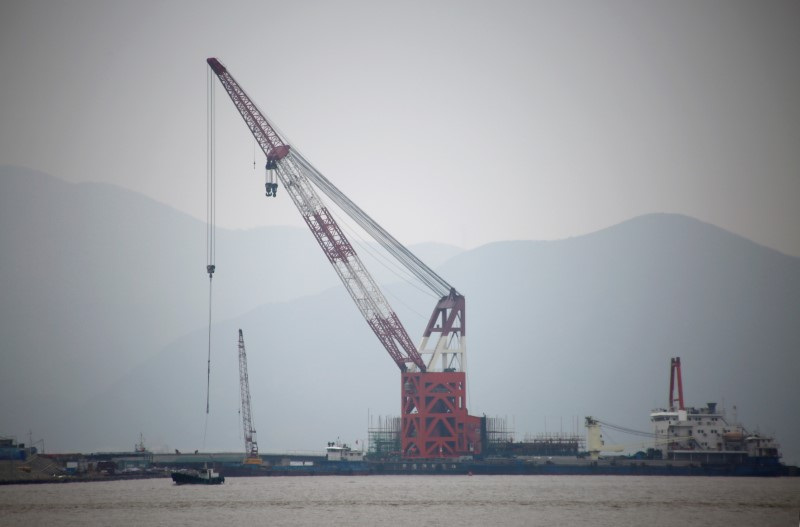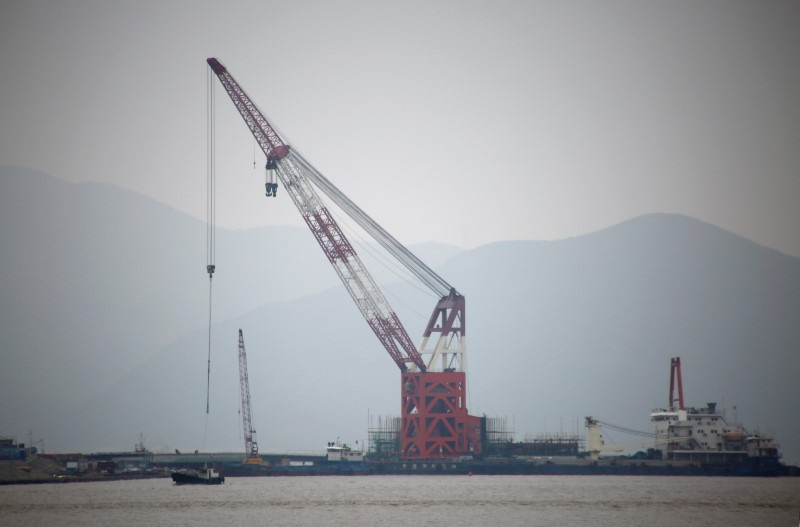Commodities
China boosts crude oil stockpiles in July amid weak refining: Russell

By Clyde Russell
LAUNCESTON, Australia (Reuters) -Even though its imports of fell to the lowest in almost two years in July, China continued to boost stockpiles in July as refinery throughput fell for a fourth month.
China, the world’s biggest oil importer, added about 280,000 barrels per day (bpd) to either commercial or strategic inventories in July, according to calculations based on official data.
This was down sharply from June’s addition of 1.48 million bpd, but this still appears bearish when viewed against the fact that crude oil imports dropped to the lowest in July since September 2022.
China doesn’t disclose the volumes of crude flowing into or out of strategic and commercial stockpiles, but an estimate can be made by deducting the amount of crude processed from the total of crude available from imports and domestic output.
China’s refineries processed 59.06 million metric tons of crude in July, equivalent to about 13.91 million bpd, according to data released on Thursday by the National Bureau of Statistics.
This was down 6.1% from the same month last year and was the weakest month on a barrels-per-day basis since October 2022.
Crude imports were 9.97 million bpd in July and domestic output was 4.22 million bpd, given a total of 14.19 million bpd available to refineries.
Subtracting the volume processed of 13.91 million bpd leaves a surplus of 280,000 bpd.
For the first seven months of the year China’s surplus crude amounted to 800,000 bpd.
Oil imports from January to July were 10.89 million bpd and domestic output was 4.28 million bpd, giving a total of 15.17 million bpd available to refiners, of which they processed 14.37 million bpd.
The overall picture that emerges from China crude imports and refinery processing is that the country’s oil sector is unabashedly soft.
Imports have been trending weaker, as has refinery throughput, and this has allowed stockpiles to continue to grow.
OPTIONS
The addition of more crude into storage will also allow China’s refiners the option of further trimming imports should crude prices start to rise again in the event of an escalation in geopolitical tensions, faster demand growth in the rest of the world or further supply tightening by the OPEC+ group.
Of the three above factors that could increase oil prices, the risk of worsening situations in the current Middle East and Russia-Ukraine conflicts is the most realistic.
Demand growth around the world remains muted and OPEC+ is still slated to start withdrawing some of its output cuts from October onwards, although the group has said it can revisit this decision if market conditions aren’t as it expected.
There are already some signs that OPEC+ is re-evaluating its bullish forecast for China’s demand growth in 2024, with the Organization of the Petroleum Exporting Countries (OPEC), which forms the OPEC+ group along with allies including Russia, making a small cut to its China demand estimate in its latest monthly report.
OPEC expects China’s oil demand will rise by 700,000 bpd in 2024, accounting for one-third of the global increase. The August forecast for China’s demand growth is just 60,000 bpd below OPEC’s previous estimate.
With crude imports and refinery processing contracting so far this year, it’s hard to see how any rebound could be strong enough to meet OPEC’s forecast, which is still strong despite the small downward revision.
The International Energy Agency (IEA) is more cautious on China’s demand growth, saying it will account for about one-third of the global total of 950,000 bpd in 2024.

This means the IEA expects China’s oil demand growth to be about 313,500 bpd in 2024, which also seems optimistic given the data for the first seven months of the year.
The opinions expressed here are those of the author, a columnist for Reuters.
Commodities
Oil prices rise; U.S. crude inventories plunge, Russia-Ukraine truce eyed
Commodities
India’s Reliance to stop buying Venezuelan oil over US tariffs, sources say
Commodities
Oil prices climb on Venezuela supply worries

 Forex3 years ago
Forex3 years agoForex Today: the dollar is gaining strength amid gloomy sentiment at the start of the Fed’s week

 Forex3 years ago
Forex3 years agoUnbiased review of Pocket Option broker

 Forex3 years ago
Forex3 years agoDollar to pound sterling exchange rate today: Pound plummeted to its lowest since 1985

 Forex3 years ago
Forex3 years agoHow is the Australian dollar doing today?

 Cryptocurrency3 years ago
Cryptocurrency3 years agoWhat happened in the crypto market – current events today

 World3 years ago
World3 years agoWhy are modern video games an art form?

 Commodities3 years ago
Commodities3 years agoCopper continues to fall in price on expectations of lower demand in China

 Economy3 years ago
Economy3 years agoCrude oil tankers double in price due to EU anti-Russian sanctions



























